The Issue of Invasive Species
This week, we’re being invaded! Izzie Clarke and Katie Haylor explore invasive species: how they sneak in, why they disrupt nature, and how to fight back! Plus, in the news, scientists turn carbon dioxide back into coal, researchers have uncovered an alarming new way criminals are trying to hack you and the mice with infrared vision.
In this episode
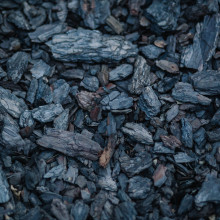
00:54 - Technique turns carbon dioxide back into coal
Technique turns carbon dioxide back into coal
with Torben Daeneke, RMIT University
An Australian research team have stumbled upon something that might be the answer in the long term to climate change caused by rising carbon dioxide levels; it sounds like it should be impossible, but it’s not... Speaking with Chris Smith, Torben Daeneke...
Torben - What we have discovered is a new chemical reaction that allows us to convert CO2 back into something that resembles coal. Why is that important? We can actually convert it into a solid safe product. So in the past people have tried to take the CO2 and pressure it up or compress it into a liquid and just pump it underground. But that relies on the assumption that it will stay down there forever. And that just might not be the case...
Chris - So tell us about the technique then. How are you doing what seems - at face value - impossible - to reverse the burning process and get CO2 to become coal again?
Torben - We are using a concept that is called electrocatalysis. It sounds quite complex, but what it actually is is a version of that high school experiment where you take two wires and you put them in a glass of water and you apply electricity and you create bubbles - oxygen and hydrogen. So what we're doing here is quite similar. So we have our liquid metal catalyst. We apply electricity and we use the energy from the electricity to convert CO2 back into coal.
Chris - Now tell us about this liquid metal catalyst; that's obviously the special feature here. So what's in it?
Torben - For all purposes, the liquid metal catalyst looks a lot like mercury but it's not mercury. It's based on gallium. Gallium is another metallic element with a very low melting point and it's completely non-toxic and we use this gallium-based alloy, which is liquid at room temperature, and we add another element to it which is cerium. So cerium is a highly reactive metal that is also used in the little spark stones in fire lighters and these sort of things.
Chris - And what's the chemistry behind this?
Torben - This entire setup is best described as sort of a beaker with a wire in it and then our liquid metal, which also connecting electrically to. And then we've got a fluid in there that's saturated with carbon dioxide. And when we apply electricity to it, we then separate the carbon dioxide molecules into oxygen and into carbon. The cerium inside of our liquid metal really helps to facilitate this process.
Chris - Do you know how the cerium's doing that?
Torben - That's quite a tricky question. We don't fully understand that yet. But our best guess at the moment is that the cerium actually forms an oxide during the reaction and then it gets electro-chemically reduced back to the cerium, so we cycle the cerium atoms between oxide and metallic cerium.
Chris - And in the process you generate this carbon material, whatever it is. Is it a mixture of chemicals, or is it just pure carbon?
Torben - It is what we would call as a chemist a highly functional ice carbon sheet, which still has some oxygen and hydrogen molecules embedded in them. So it's not pure carbon, and chemically it probably resembles more brown coal and, you know, black graphite coal.
Chris - But, critically, it's not gaseous carbon dioxide anymore is it. So you've got something which is in potentially a stable, depositable form that could be packed away somewhere safe?
Torben - Exactly. So other electrochemical processes they might create liquids, and a lot of these carbon-based liquids are actually quite toxic themselves, so you can't really store them; and the CO2 if you pump it underneath the ground you really just rely that there's no earthquakes, there's no cracks in the ground that will just simply release it back out of the atmosphere.
Chris - And how does the energy equation stack up? If we look at energy you've had to supply to make this happen, does it look favourable?
Torben - Unfortunately the laws of thermodynamics dictate that whatever energy you got out of burning the coal you will have to put that back into the CO2 to turn it back into coal. From what we have seen in our experiments we don't have to supply a huge amount more to it than what you have gotten out when we burned it. And this means that, ultimately, when we are reaching that point where we have to reduce the CO2 from our atmosphere and actively take it out and turn it back into coal, at that point in time we need to have large scale cheap renewable energies to actually drive this process.
Chris - And the process, obviously this is at the very earliest stages, but could you see this sort of process scaling. Would this work at scale in order to make a dent in what we've done to the planet?
Torben - Yes we do believe that this is possible. So at the moment we're working with a small beaker and a small droplet of liquid metal producing small amounts of solid carbon. But we do not see any fundamental issue why this cannot be scaled up.
Chris - Sounds slightly like I'm trivialising, but is there enough gallium and cerium on the planet to actually do this meaningfully?
Torben - We actually had a look into this, because a lot of people think that gallium is quite a rare material, and cerium as well is actually called rare earth metal. But when we looked at the actual abundance of these materials in the world, they're about as common as other bulk materials like lead or tin. So we do not think that there is a fundamental problem in terms of the availability of these metals in the Earth's crust...

06:41 - Cables and connectors targeted by hackers
Cables and connectors targeted by hackers
with Robert Watson
Computer scientists at an international security conference announced this week a major vulnerability that targets devices like laptops and tablets. It exploits the fact that we frequently have to plug these things in, or connect them to other pieces of equipment like projectors, network cables or just the charger. What the hackers do is produce a connector that looks deceptively like the real thing but as soon as you plug it in, it sneakily hijacks your device and installs a backdoor for the criminal. Jenny Gracie went to see how...
Jenny - Now we all know in order to keep our devices safe we really shouldn't open those dodgy e-mail attachments, or click on any flashing pop-ups. But how many of us think twice about borrowing a phone charger, or even plugging into a public charging point. The ability to physically link devices is bringing about some unanticipated risks. Robert Watson, from the Cambridge Computer Laboratory, explains why these devices are so vulnerable in the first place.
Robert - So there's this pressure to try and reduce the number of plugs or sockets on individual devices. And, over time, we've tried to make them as powerful as possible so every plug has to do as many things as possible. One of the things we've seen particularly recently is a desire to combine power and data, so plugging your device in to charge it up requires the ability to communicate across the same cable. And because of performance concerns - we want to use faster and faster storage, or faster and faster networking, those interfaces have become very complicated. And one thing we do know in computer science is that as interfaces become complicated it gets harder and harder to make them correct. And when they are incorrect they're often insecure...
Jenny - So these devices are more and more vulnerable as they get more technologically advanced, and they could be hacked. What actually could be taken from the devices?
Robert - It depends what's on the devices. You and I probably use our personal computers to make purchases, to do our online banking, to access our e-mail, maybe our health records... all of those things become available to an attacker who - to use the terminology in our discipline - "owns" your machine. What does it mean to "own" a machine? It means they can run arbitrary software on it: they can read the contents. And of course they can affect what the machine does in the future it's not just the data you have today, but the passwords you enter tomorrow or the bank information or the credit card number you enter in two or three weeks time.
Jenny - Robert and his colleagues have been researching devices that have a physical connection, like through a power cable or an adapter, or even a USB stick. Once the team identified the vulnerabilities, they built prototype hardware to investigate how the attackers might manipulate and access them.
Robert - So if you have a USB computer, so an Apple Mac or an HP Notebook, the devices that we provide look like your everyday device you plug in: a video projector you plug in; a power cable; or an ethernet device and within a second we have ownership of your machine. Under the hood, what's happened is the computer hass said to the device "What kind of device are you?" And we as the attacker get enormous choice: we can say we're any kind of device we want to be.
The reason this is a powerful tool for the attacker is it allows the hacker to find the worst-written device driver on the computer that you're running on. So they have their choice of which piece of software to attack. There is an interaction over the cable, which declares itself as a device. It accesses some memory it's not supposed to in a way that it's not supposed to. And from that point onwards it has ownership of the machine. When we give a demonstration, a window pops up on the screen giving you access to the machine to allow you to do what you want to do what without entering a password. But attackers have a lot more choices. It could silently compromise your machine and appear to perform all the functions it's supposed to, it could charge your notebook, or display something on the screen, and you might only later find out or perhaps never find out the machine was compromised. And, of course, the software that they install might continue to operate long after you unplug the device. So there is the opportunity for the attacker to dial home in the future to return some confidential data, or maybe run some other payload that they provide later: ransomware for example...
Jenny - That's terrifying thoughts there. It's scary to think that something as innocent as a projector could gain control over computers by masking an ulterior motive. I then asked Robert if they have to think like a hacker in order to test their work?
Robert - We have to think about the limits of the system and try to push a bit beyond them. The goal is to challenge the assumptions made by the legitimate author of the software they have made assumptions about the trustworthiness of communications or memory access or protocols. By pushing on those boundaries, we often find bugs; and bugs are sometimes - and in this case significantly so - vulnerabilities.
Jenny - The team work closely with tech giants like Apple Microsoft and Google to help find solutions to these vulnerabilities. For the system developers, te best protection would be to engineer the device drivers to higher standards and rigorously test them for this new class of vulnerabilities. But what about device users? Well just because you have antivirus software, that doesn't mean you're safe. These protective systems can be bypassed and your security still compromised. In that case, how can we be safe?
Robert - And the best advice to users is, please install the updates provided by Microsoft and Apple and others: they are available already. We have worked with these vendors for quite a while to try and ensure the updates address the problems that we've been encountering, and we hope that they will at least limit the opportunity for future attacks and limit the known vulnerabilities. Sadly, the terrible advice we always give people about not opening attachments they receive from people they don't know, it's probably time to start feeling that way about devices from people they don't know as well...
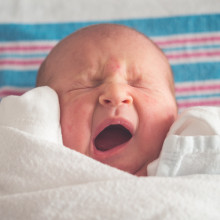
13:08 - New tech for newborn intensive care units
New tech for newborn intensive care units
with Amy Paller & John Rogers, Northwestern University in Chicago
Premature babies, meaning those born before 37 weeks, can have a lot of medical problems. They’re more prone to infection, and immature lungs mean that they often need help breathing. Because these babies are so vulnerable, it’s crucial to monitor vital signs like blood pressure and temperature, to be aware of complications that might be brewing. Currently this means a mass of wires and electrodes, which can cause damage to very thin skin. Katie Haylor spoke with Amy Paller, a paediatrician at Northwestern University...
Amy - As you can imagine it tethers the baby to the bed, it limits the movement but it also limits the access to the baby for health care personnel. Most important though, it decreases the access for the parent. And right now, skin-to-skin contact has truly been shown to be important for the health of these premature babies. Repeated studies have shown that it decreases the risk of infections. It increases the ability to gain weight. It decreases mortality and it's been shown as well to decrease lung disease and liver disease. And these wires get in the way of being able to do that well.
Izzie - The solution? This week an interdisciplinary team of scientists at Northwestern University in Chicago have published a paper on skin-like, soft, flexible electronic sensors, that require minimal adhesives, and take up minimal space on the baby. One on the chest, another on the foot. These sensors are able to all the information of current wired monitoring methods, but crucially, this new system is wireless. John Rogers is the senior engineer on the study.
John - The power is delivered wirelessly through a loop antenna that we place underneath a mattress in the isolette. This power enables the sensors to operate and to capture heart activity, respiration rate, body temperature, and blood oxygenation. Time synchronised data from each of these devices is transmitted wirelessly back to the same loop antenna which itself is connected to reader electronics, also in the base of the isolette. A bluetooth radio interface to that reader electronics then transmits the data from the reader to a tablet computer with a graphical user interface that displays the data in a format that's familiar to the nurses.
Katie - Now have you ever paid for something in a shop simply by touching your phone to a reader? Well that kind of tech is how the baby's data gets from the sensors on its skin to the device under their little mattress in the intensive care unit. And then Bluetooth, just like you can connect to via your smartphone gets this data from the mattress to the nurse's station. And it turns out that these new sensors can match the capability of the current wired methods. And then some. Back to John.
John - Our skin-like devices also provide additional data streams such as continuous measurements of temperature at two locations across the baby's body; the chest and the foot. And this differential temperature can be an important parameter that nurses can track and in addition we actually capture the transit times for pulses of blood to move from the heart to the foot. And this transit time can be used as a surrogate for blood pressure, thereby allowing continuous tracking of this important parameter without the need for a cuff.
Katie - And this is important because blood pressure cuffs can cause bruising in such tiny babies and only give a reading at one time point, and other methods to measure blood pressure can be invasive. So just how impactful is the wireless nature of the senses. Back to paediatrician Amy Paller.
Amy - Parents can pick up the baby without being encumbered. Health care personnel can have better access, but it also means that the baby can get wet and these can stay on. Imaging through chest x-rays and MRIs does not get obscured or interfered with. In general there can be just better access and better care of the baby. We've now been able to utilise this device side-by-side with the wired monitoring in almost 90 babies. The accuracy is tremendous and we've seen absolutely no adverse effects.
Katie - Sounds very promising. And looking ahead, could this technology have applications beyond the neonatal intensive care unit?
Amy - We're already extending this technology beyond babies. It's now in our paediatric intensive care unit. It's going into our cardiac care unit. It's being extended to adults as well at at our hospital. The sky's the limit because we're expecting it soon to be deployed to outpatient settings. I think it's very important also to recognise the value of this wireless technology outside of developed countries and in fact the Gates Foundation and Save the Children have provided funding to deploy 20,000 of these devices in Zambia, Pakistan, and India. And we're hoping that these devices will really help with the morbidity and mortality rates that are seen right now in those countries.
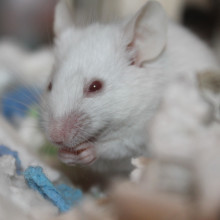
18:54 - Nanoparticles give mice infrared vision
Nanoparticles give mice infrared vision
with Tijmen Euser, University of Cambridge
Infrared light is produced by hot objects. Normally we need a special camera to see it, because the rod and cone photoreceptors in the backs our eyes in the retina, are not sensitive to light of this colour. But now scientists in China have developed nanoparticles that can be injected into the eye where they glue themselves to the retina, absorb incoming infrared and spit out light we can see, effectively endowing the eye with infrared vision. Mariana Campos asked Tijmen Euser who is from the Nanophotonics Centre at the University of Cambridge and wasn’t involved in the research, to cast his eye - using normal light to see it - over the study...
Tijmen - In order to see infrared light it first must be converted to visible light and they found nanoparticles that can do this. So they applied nanoparticles that are able to absorb infrared light and convert this to visible light. They’ve injected these nanoparticles into the mice's eyes and they have shown that mice can indeed see the infrared light.
Mariana - And the particles they use they used, do they have a special coating or something?
Tijmen -Yes. Normally if you would inject the particles as they are into the mouse's body, it would be rejected immediately by the immune system and they would not bind to anything. So what they did specifically is that they made photoreceptor binding particles, so they introduced a coating which binds to the photoreceptors in the eye.
Mariana - How does the system work?
Tijmen - What these particles have to do is something quite special because they have to absorb a photon which has a low energy and they have to emit a visible photon which has a high energy. So this doesn’t work, because the energy has to come from somewhere. So, the trick that these particles use is they absorb two infrared photons, they combine it internally and they use the combined energy to emit a visible light photon. The experience of the mice would be that they would see both the visible light that is always there, so they would see a normal green light, but on top of that they would see this additional contribution of converted infrared light.
Mariana - I’m curious, how do they realise that the mice were seeing infrared?
Tijmen - They’ve done several tests. First they’ve looked at the cellular level to see if there is an electrical response of the photoreceptors. These are small cells in the retina that act as pixels, so to say, of an eye. As a second step they looked at the pupil response of the mice and you could indeed see that the pupil reacts. And as a final test they actually did tests where they show the mice different patterns and they tried to teach the mouse to do something in response to food.
Mariana - That’s good condition training.
Tijmen - Yeah.
Mariana - Does it last forever?
Tijmen - They have shown that the effect lasts up to 10 weeks and at some point it wears off. And the reason why it wears off is that at some point the body will start to recognise these particles as being foreign to the body.
Mariana - Why do you think they would do this to mice? Why create an organism that can see infrared?
Tijmen - I think the general technique is interesting, so being able to see infrared may have some applications. One application that they mention is that you might be able to have an overlay of information that is projected in the infrared onto your retina so this would be this augmented reality application. That’s one application that I think could be interesting at some point. Another application which is not specifically about converting infrared light, invisible light, would be if you convert light from one part of the physical spectrum to another part of the physical spectrum, and this might help in treating blindness.
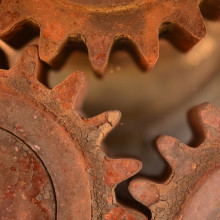
22:42 - Making a metal casting in aluminium
Making a metal casting in aluminium
with Rob Thompson, University of Cambridge
We love hearing from our listeners and every now and then we get some unusual requests from people, who want to know if science can solve their problem. Georgia Mills has been working on an interesting request from Emma…
Emma - I came to The Naked Scientists with a bonkers one. My poor, old, dad passed away in May last year and that was very hard but I wanted my boys to have something to remember him by. So I fished through some of his coat pockets and sure enough there was French chalk. He loved French chalk. Some people call it engineer's chalk. He was an engineer; it writes on pretty much anything and I just thought what I'd love to do is take the chalk and somehow make a present for my boys.
I put out the message to all the scientists I know, to say to them, “can I wrap the chalk in metal?” All of them came back saying, “well, this is the first time we've ever been asked do something like this”. And then Chris Smith from the Naked Scientists got back and went "Aha! I might have a cunning plan..."
Georgia - A cunning plan indeed which involved getting the help of a friendly neighbourhood
Rob - I'm Rob Thompson. I am a teaching fellow in the matierials science department and I still manage to carry out a bit of research into mechanical properties of alloys and ceramics.
Georgia - Well, it wasn't possible to wrap the chalk. What they could do was make a metal copy through something called metal casting which apparently involves lots and lots of sand.
Rob - We're going to use this sand and we're gonna pack that into a mould. We pack that in nice and tight and then we can pull the pattern out leaving behind the shape that we want to make. We'll cut some holes through the sand, pour the molten metal in, and then we'll have some holes to let the air out so that we end up filling the mould completely.
And then we let it cool down break all the sand off and we're left with the cast iron.
Georgia - Why sand?
Rob - Sand is pretty convenient because it's quite fine so we can pack it nice and tight so we get good surface detail but also it's mostly silicon dioxide so it's pretty stable and it doesn't really react with anything. That means that when we pour molten aluminium, at say 800 degrees, it doesn't really do anything, it just sort of sits there and takes it. Also, sand because it's a particulate, you don't get thermal shock. The expansion of the local sand particles, the sand grains, happens into the space around them so it doesn't fall apart when you hit it with something hot or as if you just had a solid ceramic mould then thermal shock would be quite likely to just break it apart.
Georgia - I know we're going to have to come back to put the metal in, why can't we pour in now?
Rob - We've bound all of this together with water so that it sticks together much like a sandcastle. We want that to evaporate and just glue all of the sand together but also water, when it gets hot, forms steam and that will make bubbles in our casting. At best it's going to give us a rubbish casting but it could potentially build up pressure and blow the casting apart, neither of which is great.
Georgia - Fine. So fast forward to two weeks later and we're back in the workshop with Rob blow torching any excess water off the mould.
Now it's time for the bit I was looking forward to, melting the aluminium. Although images of an enormous fireplace were way off, all of it took place in a little crucible wrapped in a coil.
Rob - This is an induction furnace and we've got coils of wire around the crucible. We’re gonna pass an alternating current through those. That alternating current is going to induce a current inside the aluminium in the crucible and the currents there will start heating it up just by resistance of the aluminium. We keep our wires, that we're driving all of this with, cool by passing water around them and then in that way we just pour electrical energy in and heat up the metal.
Georgia - How long does it usually take to melt aluminium?
Rob - This is a eutectic aluminium where we've mixed some silicon in. That lowers the melting point, I think it's around six hundred, six hundred and fifty...... Whereas say steel would be more like fifteen hundred, sixteen hundred degrees, so it’s a lot hotter. It's a bit quicker than that for steel.
Georgia - The aluminium started melting very quickly, while Rob added various substances like flux which makes it flow better, and a de-gasser which, well, de-gases it. Then very, very carefully, he pours aluminium that's so hot it's orange into the mould and the rest gets dumped unceremoniously into a bucket of water.
Then we chip away the sand to see our final product...
Wow! It came out and you can see the imprint, it looks amazing. One now metal French chalk preserved for time immemorial. And this technique is useful for a whole host of things.
Rob - It's often used because it's quite a quick and easy method to make something. So if you're doing a few one off bits where you just need a bit of metal, about this sort of shape, maybe you need to just finish it off afterwards with a bit of machining or something. It's quite a quick method to prototype things or make things quickly and easily. It's also used because when you're casting something like steel, there's relatively few options for what you can cast it into.
With low melting point metals, we use something called die casting where you make a reusable mould and you make 10 million pencil sharpeners out of your little magnesium. That's nice and cheap and you can make millions of them. But for something like a car engine block made of steel, you can't cast steel into steel, it would melt the steel. Then, you run out of options for what you're going to make it out of. It's not going to suffer from this thermal shock or react with the metal in some way because it's so hot. Car engine blocks are a good example of something in industry where we cast with sand and then you normally machine it out afterwards just to get the final details exactly right.
Georgia - And what about Emma, happy with the final result?
Emma - It was brilliant. We ended up with a perfect cast of my dad's French chalk and I gave it to my boys and they were absolutely thrilled. It was lovely.
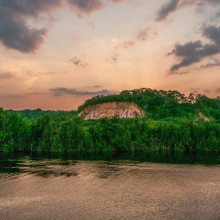
29:48 - What is an ecosystem?
What is an ecosystem?
with Andrew Tanentzap, University of Cambridge
All the living things around us play a vital role in nature but some species can disrupt that balance - we call them invasive species. So before understanding what threat they pose, we’ve got to know what was there in the first place - and how that system is connected and set up. Izzie Clarke met up with Andrew Tanentzap at the Cambridge University Botanic Garden...
Andrew - So we’re right in the heart of Cambridge, at the Cambridge University Botanic Garden, surrounded by many beautiful native plants but also some really great examples of introduced species that are really important.
Izzie - Now you look into exploring ecosystems, so what exactly is an ecosystem?
Andrew - Ecosystems are all of the living things in a place, so this will include plants and insects, and larger animals, and small microscopic bacteria and fungi that we can’t see, and how they all interact with one another and their surrounding physical or non-living environment.
Izzie – So it’s almost like a giant web, I'm picturing lots of interactions from plants to animals?
Andrew - Exactly. So it might be just like that nursery rhyme a lot of people might remember from their childhood, with the cat eating the mouse, that ate the spider, that ate the fly. So it involves all of these interactions among organisms that live in a place and that’s what really defines ecosystems.
Izzie – And what happens if you introduce something new into that system because it sounds like there’s quite a lot to balance?
Andrew – Right, exactly. Many ecosystems have evolved these interactions that I talked about over millions of years so there’s a very sort of delicate balance amongst the species that make up these ecosystems. So the real risk with introducing novel species is that they can disrupt effectively, that balance amongst all the organisms that have been in this place for a really long time.
Izzie - Now we are standing in front of what I can only describe as a history, almost a timeline, of plants. So what’s actually going on here?
Andrew - We are at the chronological bed in the Botanic Garden and this charts a timeline of plant introductions to Britain, all the way going back to the Romans, up to the present day. Now a lot of these species, they’ll be introduced for our gardens, so we can see snowdrops that will be out flowering this time of year. But there are also other species that are really useful in our everyday lives for food, so things like the cherry tomato all the potato that were introduced from South America.
But at the same time there are also some of these species that can be real nuisances in the natural environment. Some of the ones that we’ve seen, not here in the bed but walking around the garden, has been the rhododendron for example, that has escaped from many gardens and poses a real problem to many British woodlands.
Izzie - How is that a problem? You see them everywhere!
Andrew - They’re problematic because they displace the native species and, in many cases, they might be more competitive than the native species that live here already. For example, because they have different predators that don’t exist in their new range, or they produce chemicals to deter other species from interacting with them. And the species that live here aren’t adapted to those forms of warfare and that allows these species to really take hold and displace many of the native species that live in these ecosystems.
Izzie – Gosh. So they're brought in but because there aren't things like predators or their usual threats they can almost, quite literally get their roots in, and take over a place?
Andrew – Exactly, that's the real risk. And when they displace many of those native species, along with that loss of those species so too do we lose many of the benefits that many of those species provide.
Izzie - And can it just be plants that are an invasive species?
Andrew - Certainly not. A really good example in the East of England is the Chinese water deer that’s been introduced from Asia. It’s absolutely thriving in the Fens, this watery, marsh-like habitat all around Cambridge. We’ve done some research on the impacts of deer around Cambridge and so what happens is they have a tremendous appetite for tiny little tree seedlings. And so what happens is that as the big trees get old and die, there aren’t these little trees to replace them.
Izzie - So what actually turns something from being an alien, a non-native species into an invasive species?
Andrew - There are a few defining characteristics. Some of them are going to be really short generation time and the ability to produce a lot of offspring, so it doesn’t take very long to reach sexual maturity. And then when the organism does, it’s just swamping the environment with offspring. And another, third, important factor is going to be the ability to disperse, to move out into the landscape. That’s really going to heighten the likelihood that an alien species becomes invasive and a real nuisance.
Here in the systematic bed that we are looking at is the artichoke that is introduced from the Mediterranean and so we can cultivate it here with relatively little concerned that it’s going to get out of hand because the climate is so different. And that’s really different from other species like Japanese knotweed that some of your listeners might be familiar with, where there is a real risk.
Izzie - Because that’s a real problem, I mean he is now impacting people’s homes. So it’s not just, I've got this pesky weed in my garden, it's having a real knock-on effect. And if an invasive species got a bit out of hand, what have we got to lose?
Andrew - Everything. So it’s not just the tremendous cost to infrastructure, but also there’s this tremendous risk to natural ecosystems and all of the benefits that they provide to people in terms of purifying our drinking water, giving us clean air, giving us lots of biodiversity that has this sort of intrinsic value to us in terms of recreation and cultural value. So basically, we’ve got everything to lose, more than money can buy.
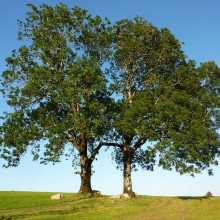
36:17 - Accidents happen: Sneaky invasive species
Accidents happen: Sneaky invasive species
with Sebastian Schornack, University of Cambridge
Many scientific papers have drawn connections between invasive alien species and the extinction of native species, in particular vertebrates. Invasive alien species are listed as one of the drivers for biodiversity loss. But how do invasive species get into a new place? Katie Haylor spoke with Sebastian Schornack, who is a researcher at the Sainsbury Laboratory at the University of Cambridge where he’s researching the causes and the consequences of the introduction of tiny organisms.
Katie - Now, many scientific papers have drawn connections between invasive alien species and the extinction of native species, in particular vertebrates. Invasive alien species are listed as one of the drivers for biodiversity loss. But how do invasive species get into a new place in the first instance? Sebastian Schornack is a researcher at the Sainsbury Laboratory at the University of Cambridge where he's researching the causes and consequences of introducing tiny organisms which can cause disease. Hello, and welcome to the show, Sebastian!
Sebastian - Hello. Nice to be here.
Katie - So, first of all, how do invasive species actually invade? How do they get into a new place?
Sebastian - Well that depends pretty much on the species. The one that we are studying, which is a Phytophthora species, a fungus-like organism, actually lives in the soil and infects plants mostly in the roots; and so with plant material and infected soil you can drag around the species all over the world.
Katie - Ah, so is it humans moving it around that's the issue?
Sebastian - Yeah, mostly passively. They are not aware of it, but they drag it with them.
Katie - Okay. So it is things like, if you tread on some soil, it gets on your boots, you get on a plane and then we go on from there...
Sebastian - Yeah. Or when you when you have trade, for example, when you ship seedlings or young plants from country to country, with it comes some soil, and in that so there can be some pathogens.
Katie - Okay. What makes these new places more vulnerable, then, to these invasive species?
Sebastian - So wherever species evolve, they evolve together with their environment. So when they develop new aggressive strategies to infect more hosts, in turn, those local plants - those host plants they infect - they can also evolve to increase their immunity to basically fortify themselves. But when a species is located into a new environment, that environment hasn't had the chance to evolve new immune strategies. So it's being hit with an aggressive strain and then is basically being wiped out in no time.
Katie - Oh, I see! So the disease-causing organisms in their native place... other parts of nature around it have kind of adapted to cope with these diseases, which isn't the case in a new place.
Sebastian - That's correct.
Katie - Can you give us a few examples of invasive species? What are we talking about and where are we talking about?
Sebastian - So a historical one is Phytophthora infestans, the causal agent of potato late blight. It originates from Mexico, but with the potatoes it came into Europe and then finally also into Ireland. And with the potatoes that were grown on a massive scale it also could amplify, and when the weather was right and the agricultural practices were not correct, it actually produced this Irish Potato Famine that we all know about. And in today's life I would say one of the most famous ones in the UK is the ash dieback, which was introduced into the UK more recently, and it is killing ash trees. But all over the world there are several examples, and one of the ones that we're studying is Phytophthora palmivora pathogen, which scientists believe is from Asia but actually was introduced into several countries including, for example, Colombia where it infects oil palm plantations and kills oil palms.
Katie - Is this what is commonly known as bud-rot?
Sebastian - Yes that's correct. We don't know much about the pathogen, we need to know much more. But one of the open questions is, for example, how does a soil pathogen like Phytophthora, which sits in the soil and infects roots, finally is able to infect the top bud of a 30-year-old oil palm. And one hypothesis is that insects feeding on the infected roots actually bring the spores of the pathogen into the bud and then infect the palm. And the palm has a problem there, because it only has one growing point at the very tip - and when it's dead, that's it.
Katie - Okay so just to clarify this is a fungi-like organism that gets into, for instance, palm and causes a bit of mayhem. Are there other crops that are vulnerable?
Sebastian - Yes. So, when it comes into new environments it can use its powers to infect all these different, diverse host species. These species, they range from palms to cacao, for example, to mango, papaya, rubber trees, and so on. A lot of them are tropical species so there is no danger for the UK because the temperatures are not right and the humidity is not perfect but the tropics are pretty much in danger.
Katie - So, just how big a problem are we talking?
Sebastian - Well, in Colombia it has been reported that, let's say if you have a 2 billion revenue from oil palm plantations you lose about 200 to 300 million.
Katie - Can you talk us a little bit more about the UK specific examples?
Sebastian - The most famous one recently is the ash dieback fungus which is a fungus that is common to Europe, but there's different varieties of it, or 'strains' as we call it. If a strain that is not native to the UK is introduced, then it hits basically ash trees, which cannot deal with that strain. And the strain can very much infect them. And normally this is ash dieback fungi... they live in the leaf litter and they usually infect that material. But this strain somehow is able to infect living material - and that was one of the features that it had; why it was so aggressive.
Katie - Wow. So what can be done, then?
Sebastian - First of all, agricultural practices have to be improved. Knowledge about the pathogen has to be improved. The actual farmers have to be trained, so that they're aware what diseases are in their plantations. And then last, but not least, you can also take measures locally to prevent spread of these pathogens. For example, Phytophthora ramorum, which infects large trees in Wales; the advice there is that you're not dragging mud across different forests or that you clean your car or that you avoid roads that are muddy so that you make sure that you're not bringing spores from one area into a new area.
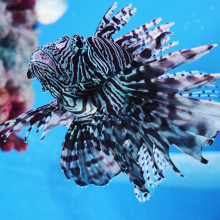
42:21 - When intentional introductions go wrong
When intentional introductions go wrong
with Angela Cano, Cambridge University Botanic Garden
In the main show, we heard about accidental introductions but what happens when an introduction isn’t an accident? Mariana Campos headed back to Cambridge University Botanic Garden to visit assistant curator Angela Cano to explore why these intentional introductions happen.
Mariana - there are a few reasons for which species get released outside their native range. Alien, or non-native, species can be introduced for the food, for their local, for other useful reasons such as as biocontrol, and for malicious purposes. If they become invasive then things can not quite go to plan.
Here’s Angela Cano, assistant curator of the botanic garden with an example…
Angela - maybe one of the most striking ones is the guava cherry. This is a shrub that was introduced from Brazil into different islands such as Mauritius or Hawaii and it was introduced because it produces edible fruits. The problem is that it became invasive; it forms big clumps of forest and local flora cannot grow any more in those environments. And an additional problem is that a species of pigs, that was also introduced intentionally, is helping the guava cherry to spread because it eats the fruits and disperse the seeds, so it’s two species really changing completely the environment of these highly diverse islands.
Mariana - Not only was the cherry guava pushing out native plants you then introduced another pesky species - the pig. Their combined traits cause damage to the environment, plus there’s a big risk of losing biodiversity.
Then there’s also the problem of when an introduced species, which is originally kept secure, escapes.
Angela - There’s the case of the lionfish that was intentionally introduced in Florida. It was supposed to be confined in aquariums, but because of Hurricane which is something completely unpredictable the aquarium was destroyed and the fishes were released to the Caribbean Ocean. This fish was originally from the Pacific and it basically started invading all the Caribbean islands and preying on the local fishes and the young of local fishes. And it’s unpredictable what can happen in the future with the populations of those reefs and of the people as well because if the fish preys upon the local fishes then the fishermen wouldn’t be able to find their traditional food and this will affect the local economy.
Mariana – Right. So pretty things that we bring in, be them beautiful lionfish or ornamental plants can also, so to say, jump the fence and become a big problem. And we not done yet! Part of the problem of invasiveness can be caused by the lack of a predator; sometimes a solution is to introduce one - that’s called biocontrol. But, you guessed it, it can go wrong…
Angela - There was an invasive species in the Pacific Islands. It was a snail so they try to fight it using another species, flatworm, and after introducing it became also invasive. So it not only preyed on the invasive snail but also on endemic and rare snails that were originally from those islands.
Mariana - But biocontrol shouldn’t get a bad reputation because it is a very powerful tool. In recent times the risk assessment of introductions has vastly improved so that accidents like that don’t happen again.
Another type of introduction little talked about are the malicious introductions. Unfortunately, living species have been used in the past as a method of bioterrorism, usually pests and diseases that are introduced to a new area where the mechanisms to deal with these haven’t evolved.
One case in South America was the attack to the cocoa trees, the vital plant to give you your chocolate fix. A fungus that causes the disease called Witches Broom infected the trees in the Amazon, which had adapted to survive this, but it was intentionally taken from there to plantation somewhere 3000 km away which couldn’t fight off this fungus. But what happened, is the disease spread so fast and thoroughly but the cocoa bean production more than halved driving down with the exports, economy, and job security. It was allegedly a political attack from poor farmers to fight big plantation owners. Almost 30 years later, the country’s cocoa exports still haven’t recovered to the levels before the witches broom introduction.
So whether something’s been released, escaped or otherwise there are multiple ways to tackle the problem of intentional introductions.
Angela - Education is very important so if people know that they that they can play a role where they should know. So, for example, people like buying exotic pets because when they are small, they are cute and look interesting but then these animals can grow quite big. And then people don’t know what to do with them and they release them into the wild. If people know that they shouldn’t do that then I guess they won’t do it.
And also if you organise authorities of different countries and make them work together to have a network of information that can also prevent species from spreading because if you find, if you detect an invasive species in the Mediterranean coast of France, if the Mediterranean countries are aware of these they can start thinking of strategies to prevent the invasion of the species.
Mariana - And what about prevention itself? Is there much done on the side of keeping things before they come in?
Angela - Yes. So for example here in the Botanic Garden we participate in expeditions across the globe, but we just don’t bring the species directly into our collection. I recently was part of an expedition to South Africa where we collected beautiful succulent plants and to be sure that we didn’t bring any pests with the plants we had to remove all of the soil in South Africa bring the plants only. But anyway, they have to stay in quarantine for a year before we can bring them to the garden; that’s to prevent invasive species to spread.
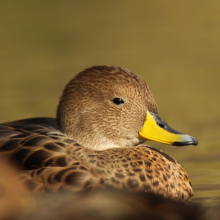
48:52 - How to save a species...
How to save a species...
with Dickie Hall, South Georgia Heritage Trust
From problems to solutions. When rodents took over the South Georgia Island, they had a devastating effect on the number native rare birds. Izzie Clarke and Katie Haylor were joined by Dickie Hall from the South Georgia Heritage Trust who was a key member of an ambitious and successful project to save them…
Izzie - Dickie what are we actually listening to here?
Dickie - That's the call of the South Georgia pintailed duck which is a tiny, very cute and endemic duck. It's in South Georgia it's found nowhere else in the world.
Izzie - Oh my goodness. What's the problem then, why do we need to have a project at the South Georgia Island to save these?
Dickie - Well a couple of hundred years ago rodents were introduced to South Georgia and basically rats and mice on South Georgia are devastating to the terrestrial environment
Izzie - How big a problem is that and how did they all come over?
Dickie - Well we probably have Captain Cook to thank for the introduction of rodents to South Georgia. He went there a couple of hundred years ago, or 1775, and he didn't spend long in South Georgia but when he came back to the UK he published his notes about South Georgia, and in them he mentioned the fur seals and it was not long after he mentioned this that the first sealers arrived in South Georgia and with them they brought the rodents.
Izzie - What's so bad about them?
Dickie - On South Georgia in particular, the rats were devastating to the environment. It's an environment that's never had any kind of land predator, and when rats were introduced to an environment, they basically run wild. There is nothing to hold them back. There's nothing to stop them. None of the animals in South Georgia have a defense against them. So all of these little tiny birds that are ground nesting and burrow nesting, they have no way of protecting their chicks and their eggs and the rats just feast on them and destroy the populations.
Izzie - So how can you go about solving that problem? That sounds like a pretty big undertaking.
Dickie - Well eradications in general are very difficult. Island eradications especially on the scale of South Georgia are incredibly challenging and the only way to do it is to remove 100 percent of the rodents from the island. If you remove 95 percent you've failed they will breed back up in numbers within a few years and just start all over again.
Izzie - How can you get rid of these rats and mice?
Dickie - Well we used an aerial baiting operation, so we used three helicopters over the course of three baiting seasons to go to South Georgia and we covered the whole of the island with rodenticide, so a bait that would target the rodents and kill them.
Katie - I've got a question. How do you make sure that you're just getting the rodents and nothing else? Is that quite challenging to make it that specific?
Dickie - It is very challenging. The manufacturers of the bait develop the bait so that it is palatable and attractive to rodents, and as unpalatable and as little attractant as possible to any other species.
Kaite - Ah okay. What actually is it?
Dickie - The bait that we use, the toxin is called brodifacoum, and it's basically a cereal based pellet. So it uses cereal grains munched up with a tiny amount of this toxin added to the grain and that pellet is enough to kill an individual rodent.
Izzie - But you said you've got to make sure you get rid of every single rodent so how can you check that that has happened?
Dickie - Well after the three baiting phases we returned to South Georgia and we had a season where we spent six months searching the island using passive monitoring devices and active monitoring devices, and the active side of that was that we have three rodent detector dogs brought in from New Zealand, and we covered the whole of South Georgia searching for any evidence of rodents. And thankfully in May of 2018 we were able to announce to the world that South Georgia for the first time in 200 years was finally free of rodents.
Izzie - Have you seen results from that eradication?
Dickie - Yeah. When we returned to South Georgia just last year we were seeing absolutely stunning results. So every single place that we visited, we were seeing the endemic birds, so the South Georgia pipet, which is a tiny little songbird. And the South Georgia pintail, which was the little duck that we heard earlier. Everywhere we went we were finding these birds which had been completely unheard of before the eradication took place. Now they've returned to South Georgia en masse and we're seeing literally flocks of hundreds and hundreds of pintail ducks and many thousands of the pipets.
Izzie - And have other people or other organisations picked up on this technique of eradication and using that to try and save other species?
Dickie - Yeah it's been widely used around the world. The New Zealanders and the Australians really pioneered it. Since we've done the work on South Georgia, I've now moved on to work with the RSPB and they're conducting another eradication project this time on Gough Island which is a little mid-Atlantic island which has been invaded by mice about 200 years ago, and they're having a similar effect on Gough Island as the rats did on South Georgia.
Izzie - And so would you say eradication is the best way forward?
Dickie - Yeah. There's not really any alternative when an environment is invaded by rodents. It doesn't have a way to recover so you just have to remove the problem. They're not meant to be there, if it wasn't for human activity they never would have reached many of these places. So they just have to be removed.
Izzie - But could prevention ever happen, is there any steps to avoid this situation from happening in the first place?
Dickie - Yeah. There are not many pristine environments left but where they do exist biosecurity is key. It is much easier and much cheaper to prevent an organism reaching a pristine environment than it is to try and remove them after the event.

54:49 - How does alcohol affect my brain?
How does alcohol affect my brain?
It’s time for our question of the week, and Jack has been fermenting the facts of this question from Donald with the help of Joe Galea from the University of Birmingham.
Jack - We’ve all been there, one drink becomes two, two becomes four and then all of a sudden our volume goes up and our vision starts to blur. But why does alcohol cause this? Over to Joe Galea from the University of Birmingham, to distil the answer for us...
Joe - The compound in our alcoholic drinks that gets us drunk is ethanol, and it’s used across a wide range of industries as a combustible fuel. Therefore, it is not surprising that when we drink such a poisonous liquid in alcoholic drinks, it can have powerful and long-lasting negative side-effects on our brain. Once alcohol enters the bloodstream, it starts to affect how the brain functions by altering levels of neurotransmitters.
Neurotransmitters are essential chemical messengers which transmit messages between neurons. In other words, they allow brain regions to communicate with one another. Neurotransmitters can either be excitatory or inhibitory; therefore one brain region (or neuron) can increase or decrease another brain region’s activity through neurotransmitters. Crucially, alcohol increases the effects of the inhibitory neurotransmitter GABA, and reduces the effects of the excitatory neurotransmitter glutamate. As a result, it has a general suppressive effect on brain function which may not be surprising given alcohol is known as a depressant.
Jack - But since GABA and glutamate are found across the entire brain, maybe alcohol does a lot more than just mess with movement. Back to Joe....
Joe - In fact, alcohol has a strong depressant effect on vision, hearing, touch and basic bodily functions. For example, drinking very large amounts can slow your heart rate and breathing down to dangerously low levels. However, alcohol does have a particularly strong effect on an area of the brain called the cerebellum, which is a small structure at the back of your brain important for movement and coordination. As the cerebellum has a high level of neurons which are controlled by GABA, alcohol causes the functioning of the cerebellum to be highly impaired. This leads to the standard ‘drunk’ characteristics of inaccurate movements and a lack of coordination. Long-term alcohol abuse can in effect poison the cerebellum and cause cerebellar ataxia - a chronic disease associated with a lack of movement control, which persists even if the person has given up drinking.
Therefore, even though alcohol influences the entire brain through its effects on neurotransmitters, the main characteristics associated with being ‘drunk’ are primarily due to alcohol’s impact on the cerebellum.
Jack - Thank you Joe for your expertise.
We also had several spirited suggestions in the forum, this question sparking discussion by chiralSPO about GABA pathways as well as the difference between acute and chronic effects of alcohol, and from evan_au about how genetics could have a role.
Next time, we’re considering this question:
Chani - My socks never stay together in the wash. One always disappears. Is there a scientific explanation for where those socks go? Why are they so unhappy in monogamous relationships?










Comments
Add a comment